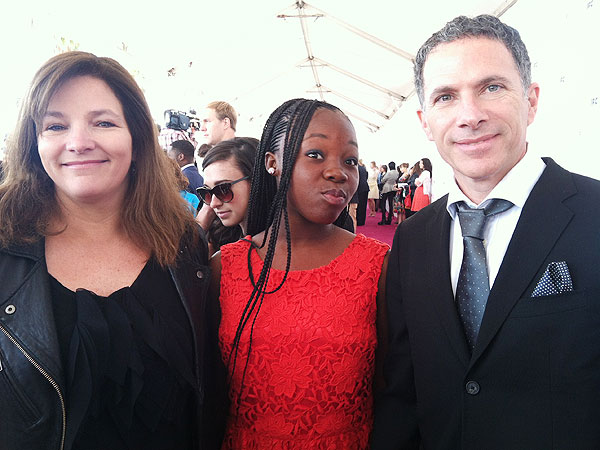Pressed in the race for mayor of Los Angeles to say how he would fix a persistent budget gap that has led to the gutting of many city services, Eric Garcetti urges voters to look at what he has done in the past.
The onetime City Council president claims credit for reforms that he said cut the City Hall shortfall to just over $200 million from more than $1 billion. He sees "tremendous progress," principally in reducing pension and healthcare costs, and asserts: "I delivered that."
But the truth is in dispute. Although there is not a singular view about any aspect of the city's troubled finances, most of those in the thick of recent budget fights depict Garcetti not as a fiscal hard-liner but as a conciliator who used his leadership position to chart a middle ground on the most significant changes.
Mayor Antonio Villaraigosa, city administrative officer Miguel Santana and one of Garcetti's rivals in the mayoral race, Councilwoman Jan Perry, were among those who pushed for bigger workforce reductions and larger employee contributions toward pensions and healthcare. Labor leaders and their champions on the City Council, including Paul Koretz and Richard Alarcon, sought to cushion the blow for workers.
Garcetti and his supporters say he moderated between those extremes. His critics said he worried too much about process and airing every viewpoint rather than focusing relentlessly on shoring up the city's bottom line.
"It was through the mayor's persistence and steadfast position that we got ongoing concessions," said Santana, the chief budget official for Los Angeles. "It was in collaboration with the council leadership that we finally reached agreements with labor."
The $1-billion-plus deficit Garcetti speaks of shrinking refers not to a single year but to the total of budget gaps that confronted Los Angeles over four years if no corrective action had been taken. The city's fiscal crisis worsened during that time because Garcetti and his fellow council members — including Perry and mayoral candidate Wendy Greuel — approved a city employee pay raise of 25% over five years just before the country stumbled into the recession. (Greuel left the council in 2009 when she was elected city controller.)
Although Garcetti focuses on his role, a portion of the financial improvements were outside his control. The state's elimination of redevelopment agencies in 2012 returned millions to L.A.'s general fund. Tax revenue also ticked upward with the economic recovery.
Garcetti's position as council president from 2006 through 2011 did put him at the center of debate about annual shortfalls that ranged to more than $400 million.
In 2009, he supported an early retirement plan that knocked 2,400 workers off the payroll. "I really pushed that through," the councilman said in an interview. Two participants in confidential contract talks at the heart of the deal had diametrically opposed views. "He made it happen, period," one said; the other offered: "I wouldn't say he was a major mover."
The plan saves the city a maximum of $230 million a year in salary and pension reductions in the short run. But Los Angeles borrowed to spread the costs of the program over 15 years, with current employees and retirees expected to shoulder the cost of the early exits.
The early retirements are expected to do nothing to resolve the long-term "structural deficit" — the $200 million to $400 million a year that Los Angeles spends above what it takes in. And early retirements could even be a net negative in the long run if, as city revenue recovers, new employees are put in those 2,400 empty positions too quickly.
In 2010 the city completed a budget fix that did attack the structural imbalance.
Garcetti's initial proposal called for upping the retirement age for new city employees to 60 from 55 and requiring workers to contribute a minimum of 2% of salary toward their retiree health care.
Budget chief Santana offered a markedly tougher plan. It required a 4% retiree health contribution, halved the health subsidy for retirees and capped pension benefits at 75% of salary instead of 100%. Santana's plan, also for new employees, became the basis of the reform.
Some who served with Garcetti on the council committee that leads employee negotiations pushed for even greater sacrifices. But Garcetti fought against ratcheting up demands on workers, saying it would be useless to approve a plan that would not survive subsequent union votes.
The councilman's greatest contribution may have come after city leaders set their position on pensions. Garcetti took the unusual step of visiting groups of workers. Some employees booed. Some asked him why city lawmakers, among the highest paid in the nation at $178,000 a year, didn't cut their own salaries.
"There was a lot of anger," said a labor leader who spoke on condition of anonymity because that union has not endorsed in the race. "But Eric talked to people as if they were adults and stayed until he answered all their questions. People appreciated him ... taking that kind of heat."
Matt Szabo, a former deputy mayor who helped negotiate with labor, said Garcetti deserved "every bit of credit" he has claimed for deficit reduction. "He knew he was running for mayor, and he was doing the right thing, but it was something that was going to cost him later" in terms of union support, said Szabo, who is running to replace Garcetti on the council.
Most of the employee groups that have endorsed thus far in the mayor's race have come out for Greuel. One political advantage for the controller: She left the council in 2009, before the city began making its toughest demands on workers.
Garcetti found himself stuck the middle again with another 2010 vote, this one over the elimination of 232 jobs — most of them in libraries and day care operations at city parks. Garcetti voted for the layoffs. Later he voted to reconsider, though he said recently that he intended only to re-air the issue, not to keep the workers on the job.
Labor leaders faulted Garcetti for giving the appearance he might be ready to save the jobs when he really wasn't. The reductions remain a sore point, because a "poison pill" in the contract required that any layoffs be accompanied by immediate pay raises for remaining city employees. Fierce disagreement remains over whether the layoffs saved the city any money.
"That became part of the negative picture" of Garcetti, said one labor leader, who asked not to be named out of concern about alienating a possible future mayor. The candidate said in an interview that he frequently found himself hewing a middle ground between some colleagues "who simply hope more revenue would come in" and others who wanted to use an "ax," making indiscriminate cuts. He added: "To me, both views were equally unacceptable."
Critics find Garcetti too malleable, ready to shift to the last argument he has heard. But others appreciate his quest for the middle, saying the fact he sometimes irritated both budget hard-liners and unions showed he had taken a reasoned approach.
"The criticism of Eric is also sort of the good news," said one of the union reps. "He has this very process-y, kumbaya, can't-we-all-get-along style. It drove us all crazy. But now I really miss it because it seems to be all politics over policy."
james.rainey@latimes.com
 Courtesy Rachel Mwanza
Courtesy Rachel Mwanza Courtesy Rachel Mwanza
Courtesy Rachel Mwanza










